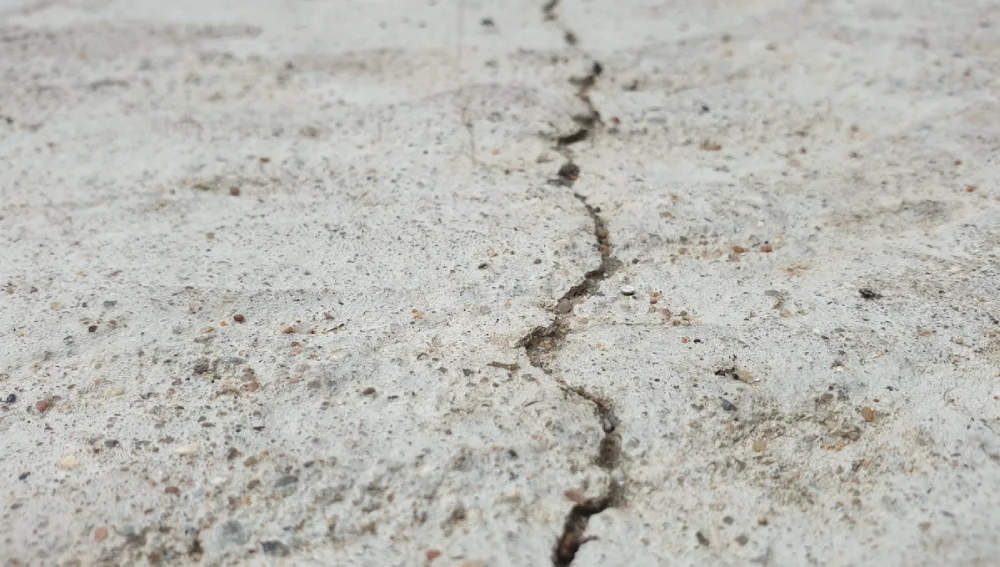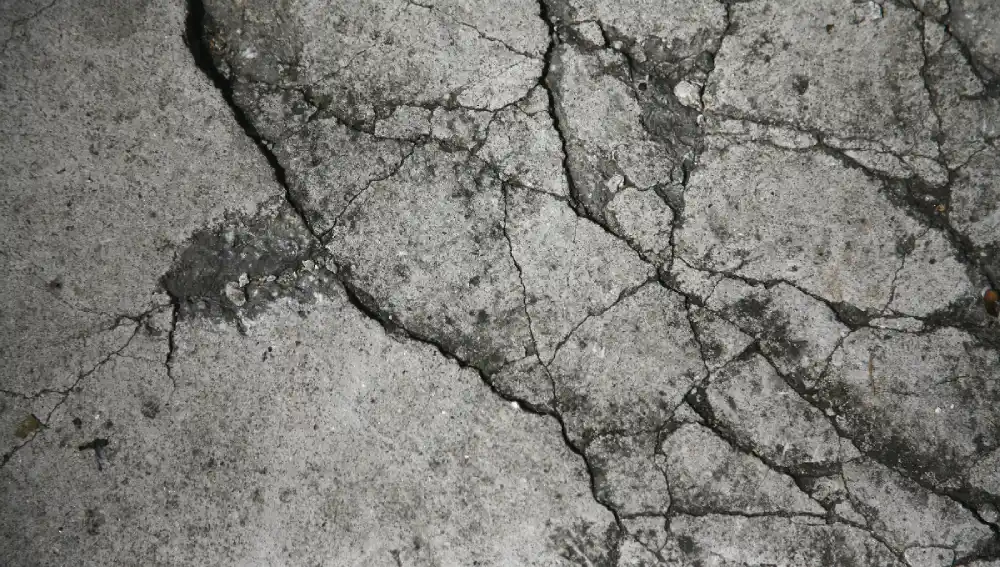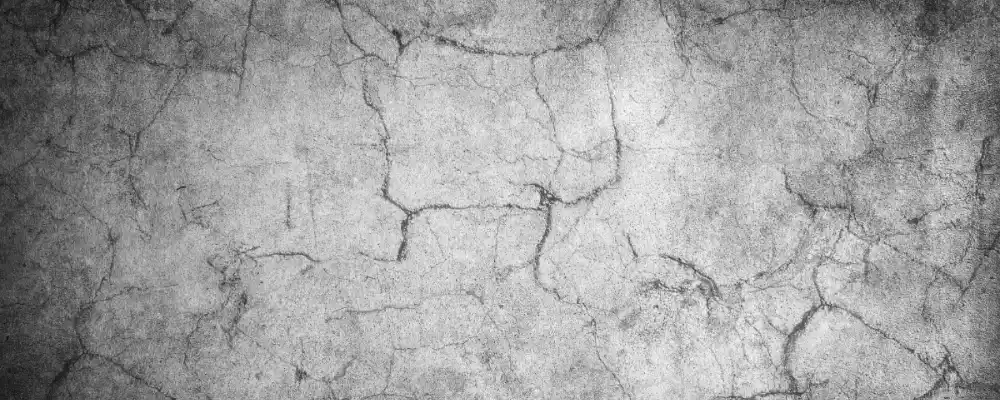Introduction
Hairline cracks in concrete are identified as small and narrow cracks. It is less than 0.003 inches wide. They are among the most common types of cracks in concrete structures, appearing in both old and new concrete. Any hairline crack indicates that the concrete has experienced some form of stress. The major reasons include temperature change, external load, and shrinkage. These cracks can also occur during the curing process of the concrete. Generally, hairline cracks do not affect the structureal integrity of the building.
The width of the hairline crack is less than 0.1 inches. These are fine lines that are badly visible. It usually appears on the surface or within the structure of the concrete. They are sometimes random, with specific patterns depending upon the source of the stress These hairline cracks may seem small but can cause deeper issues over time.
Characteristics of Hairline Cracking

Hairline cracks are a major concern because they can affect the structural components of the concrete. The key characteristics of hairline cracking in concrete are:
Width:
The hairline cracks are small and narrow. Its width is typically less than 0.1 mm. These are not immediately visible to our naked eyes.
Depth
The hairline cracks usually extend into the structural core. These hairline cracks generally affect the concrete surface layer.
Appearance
It can be fine and continuous. It runs along the surface of the concrete. Otherwise, it can be a map-like structure.
Location
Hairline crack’s appearance depends on factors like environmental conditions and shrinks. It is seen in the edges and corners of the walls where the concrete experiences higher stress.
Formation
The hairline cracks are formed immediately after the curing process. Or during the early process of concrete curing.
Impact of Hairline Cracks
Small Impact
Hairline cracks generally affect non-structural parts of the concrete. In this case, it does not affect the overall quality of the structure.
Potential Impact:
In some instances, hairline cracks may necessitate deeper investigation as they can indicate issues such as improper curing, shrinkage, overload, increased stress, etc.
Reasons for the Hairline Cracks in the Concrete

Shrinkage During Curing
The curing process of concrete can lead to shrinkage-induced cracking. As concrete is porous, when it dries out, it leads to expansion. This results in more absorption of water. The water absorption will, in turn, cause a moisture difference. This results in concrete cracking.
Improper Water-Cement Ratio
The water-cement ratio of concrete should not exceed 0.5. The lower the water content, the greater the durability and reduced shrinkage. As shrinkage is the primary cause of the crack, it is necessary to have a few pores that give compaction to the concrete. Too little water can also lead to dehydration. It leads to the cracking of the concrete.
Inadequate Curing Techniques
Concrete must require proper curing to achieve the desired durability and strength.
Excessive Vibration During Placement
Mechanical vibrators or vibrations from external sources are a major reason for the cracks in the concrete. Too much vibration causes the segregation of concrete mix. It eventually leads to cracking.
Temperature Fluctuations
Rapid or extreme temperature fluctuations can lead the concrete to expand and contract. This process leads to hairline cracks, especially in the initial curing stages.
Excessive Bleeding
Bleeding results in the rise of water to the surface of the concrete. The excess bleeding affects the surface of the concrete, making it weak. This forms hairline cracks. It is the result of water evaporation and drying of the surface.
Load Induces Cracking.
Excessive loads that are more than the concrete’s capacity can lead to cracking. These are commonly seen in structural elements or slabs.
Plastic Shrinkage
During the initial stages of curing, concrete, rapid water evaporation from the concrete surface occurs, which can cause hairline cracks within hours of pouring. It can be fixed by applying a surface treatment.
Thermal Contraction
After the concrete is set, it undergoes contraction and cracking. This causes the spread of linear cracks across the surface of the concrete. It can be controlled by using insulation and temperature control techniques.
Overworking of Cconcrete
Excessive processing of the concrete surface will have an impact on the finishing. It creates fine cracks in the form of patterns. Light patching compounds can be used to cover these cracks.
Effects of Hairline Cracks on Concrete
- Hairline cracks can adversely affect the visual appearance of the concrete surface, giving a poor and aged look.
- Hairline cracks do not significantly affect the structural integrity if they create a minimal impact and do not extend deep into the structure.
- When the hairline cracks deeper, there is a potential weakening of the concrete. It occurs in areas of increased load bearing.
- When there is a gap created due to airline cracking, it leads to reduced durability and increased permeability. This results in chemical water and other substances settling in the gaps of the concrete.
- The crack areas of the concrete are more exposed to erosion. It leads to the start of surface degradation with time.
- The hairline cracks increase the carbonation process, which causes carbon dioxide to get into the concrete. This lowers the pH level, leading to Concrete corrosion of reinforcement.
- Plastic shrinkage is where the surface of the concrete dries faster and causes hairline cracks with less moisture.
- A proper ratio of water and cement to produce the concrete mix affects the aggregate grading and leads to the formation of hairline cracks.
- The flexural stresses produced in beams and slabs need attention. This stress is seen on the side of the concrete. It results in creating hairline cracking.
- When the concrete materials are not of the desired quality, it creates poor bonding. This results in hairline crack formation.
Solutions to Prevent Hairline Cracking in the Concrete
- Remove any dust or loose particles collected in the cracks using any brush. Clean the cracks regularly with compressed air.
- When a crack appears, create a V shape with a chisel This helps prepare the crack and repair it easily with bonding material.
- The crack can be fixed by injecting epoxy. This helps to regain the structural quality.
- The cracks will lead to sliding movements of concrete. This can be fixed by filling the cracks with latex patch material. This is usually flexible.
- The larger cracks can be fixed with a mortar mix.
- The smooth surface of the concrete where the crack appears can be filled by applying concrete as a patching compound.
- To provide a waterproof barrier for the concrete in places of small cracks, effective use of silicon sealant can fix the crack.
- Installation of metal tables across the crack can help hold the concrete together. Stitching bars can also be used as a replacement.
- In places where a crack exists, it can be covered by applying a thin layer of concrete above the surface.
- A self-leveling compound can fill the gap of the crack. It helps create a smooth surface of the concrete.
- Hydraulic cement can fill the cracks as it expands and seals the gap immediately and efficiently.
Conclusion
Hairline cracking in concrete can be due to underlying issues. It can entirely affect the performance and quality of the structure. It is significant to take the necessary preventative measures and follow practices for immediate fixing of the cracks. Any delay or unmonitored cases can lead to serious effects. This can cause both functional and aesthetic damage. It can also reduce the integrity of the concrete construction.
Regular maintenance by conducting quality checks is essential for long-term durability and improving building performance. A variety of reasons can affect the construction. From environmental to materialistic factors, a building has impacts from all sides. Preventive measures can enhance the process of maintaining the structural integrity of the construction.

